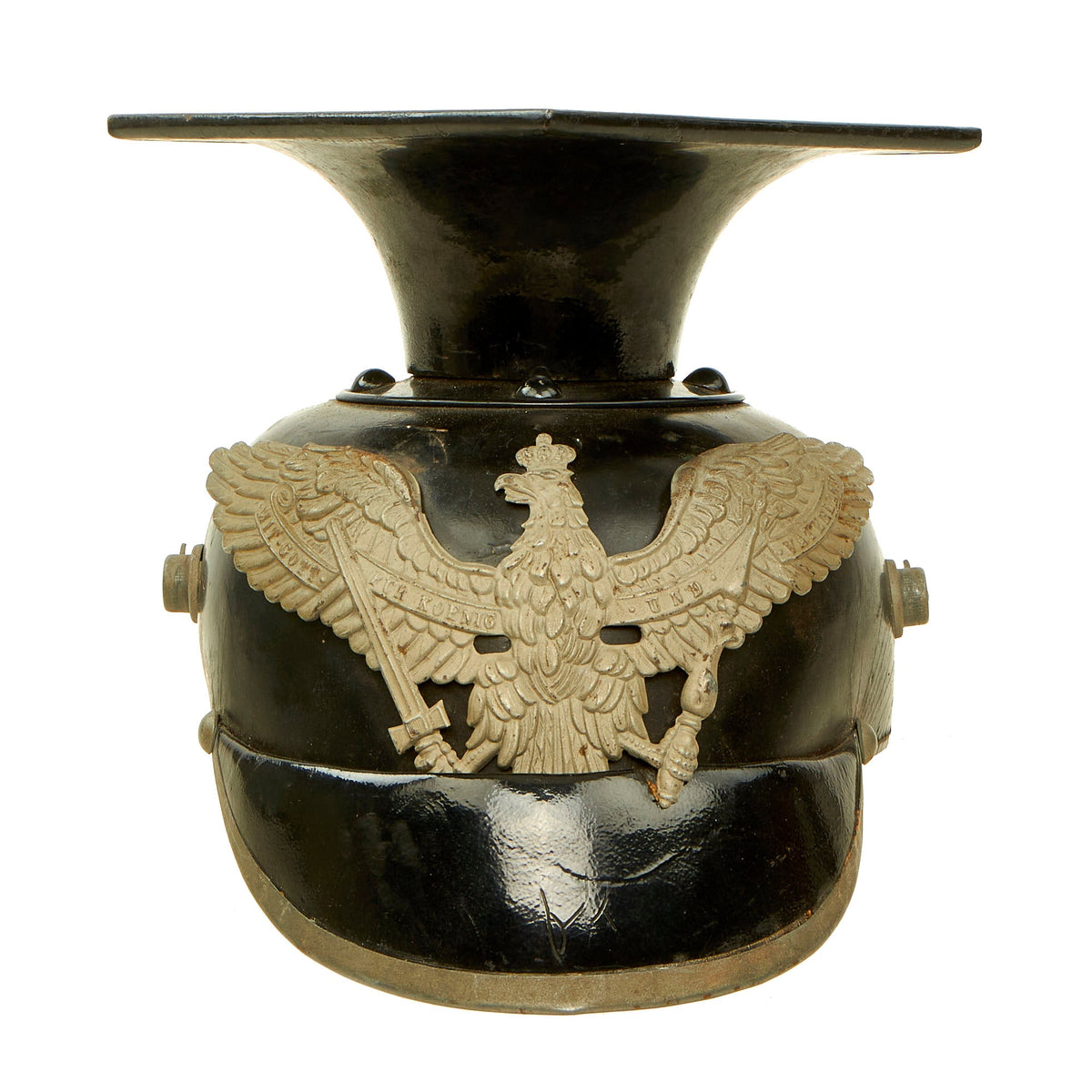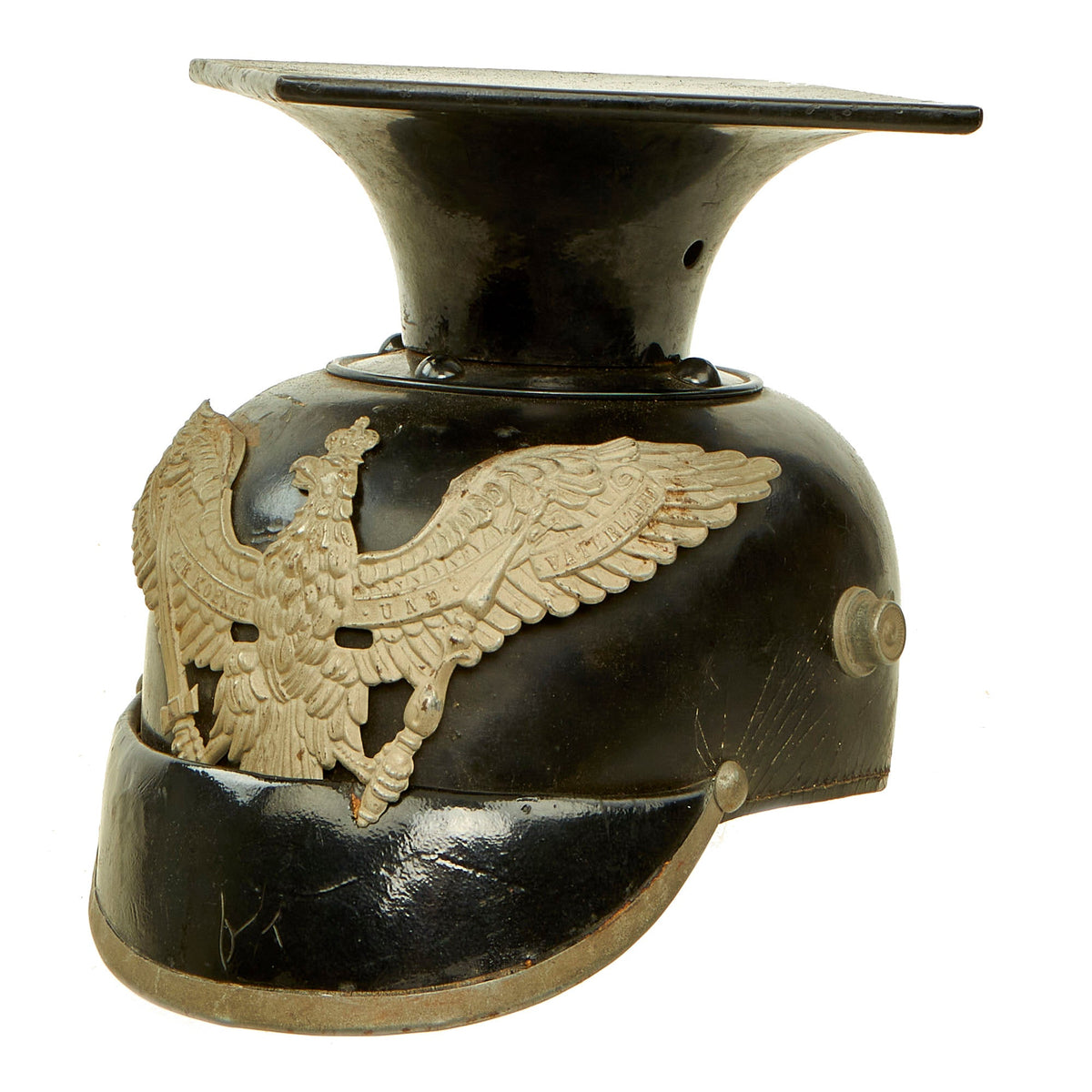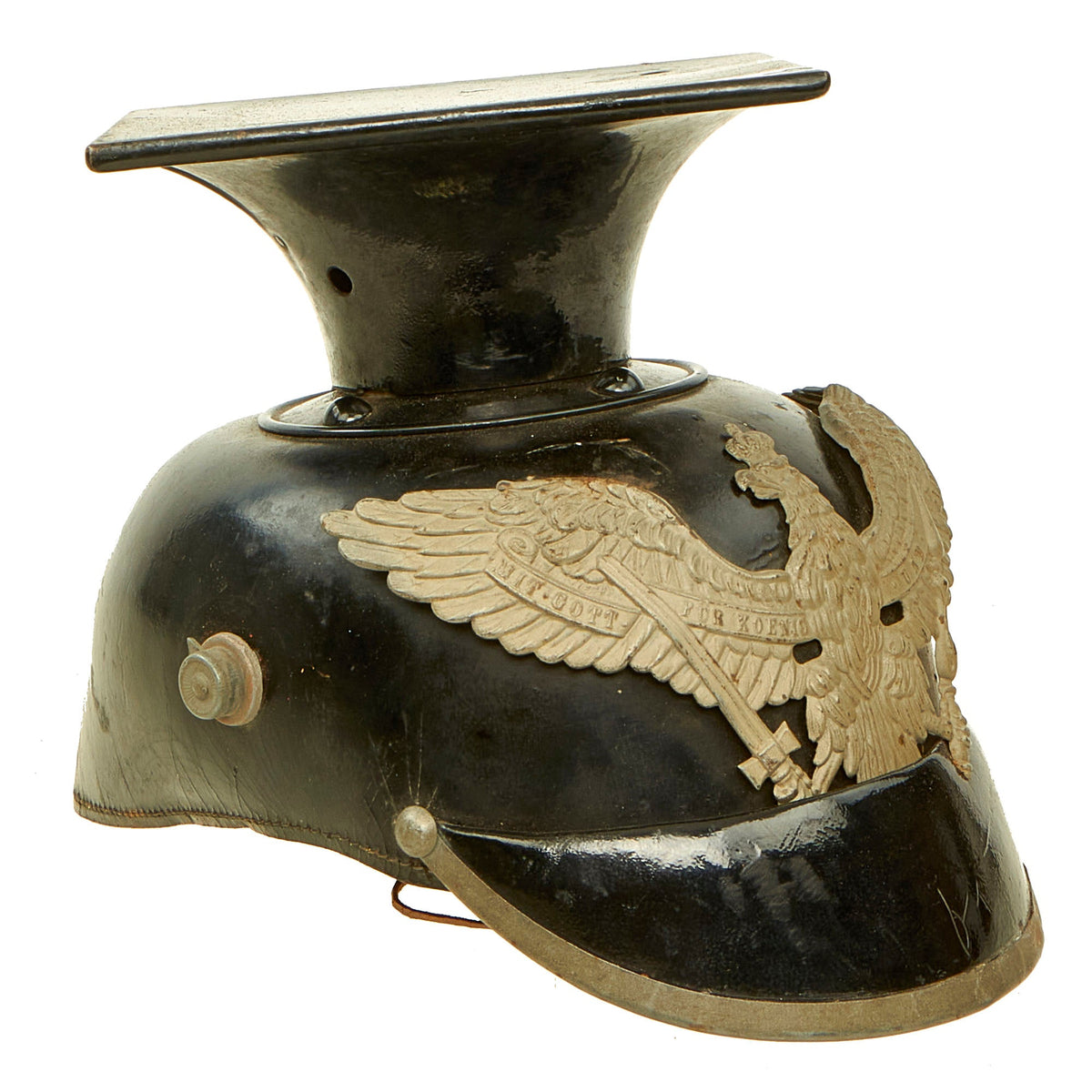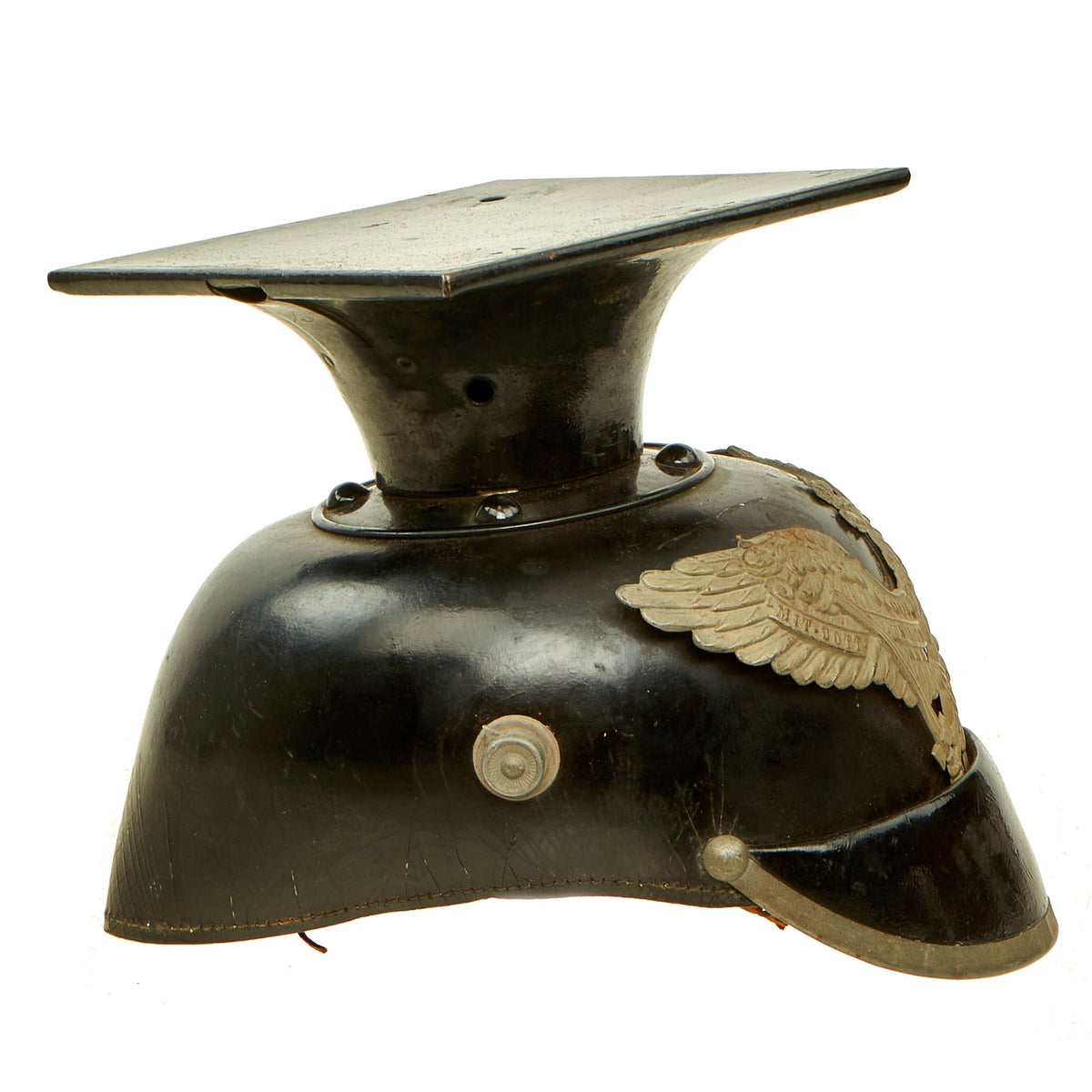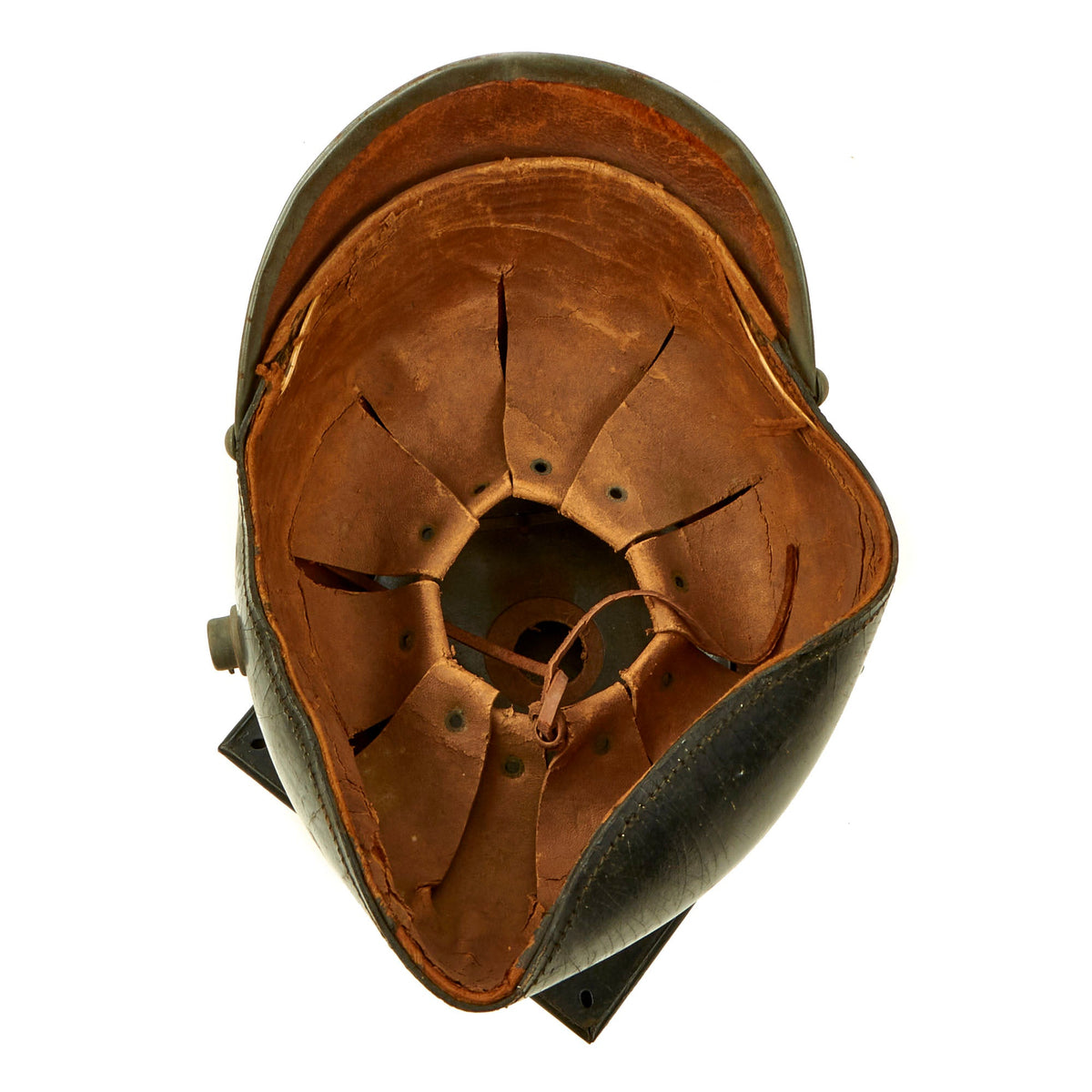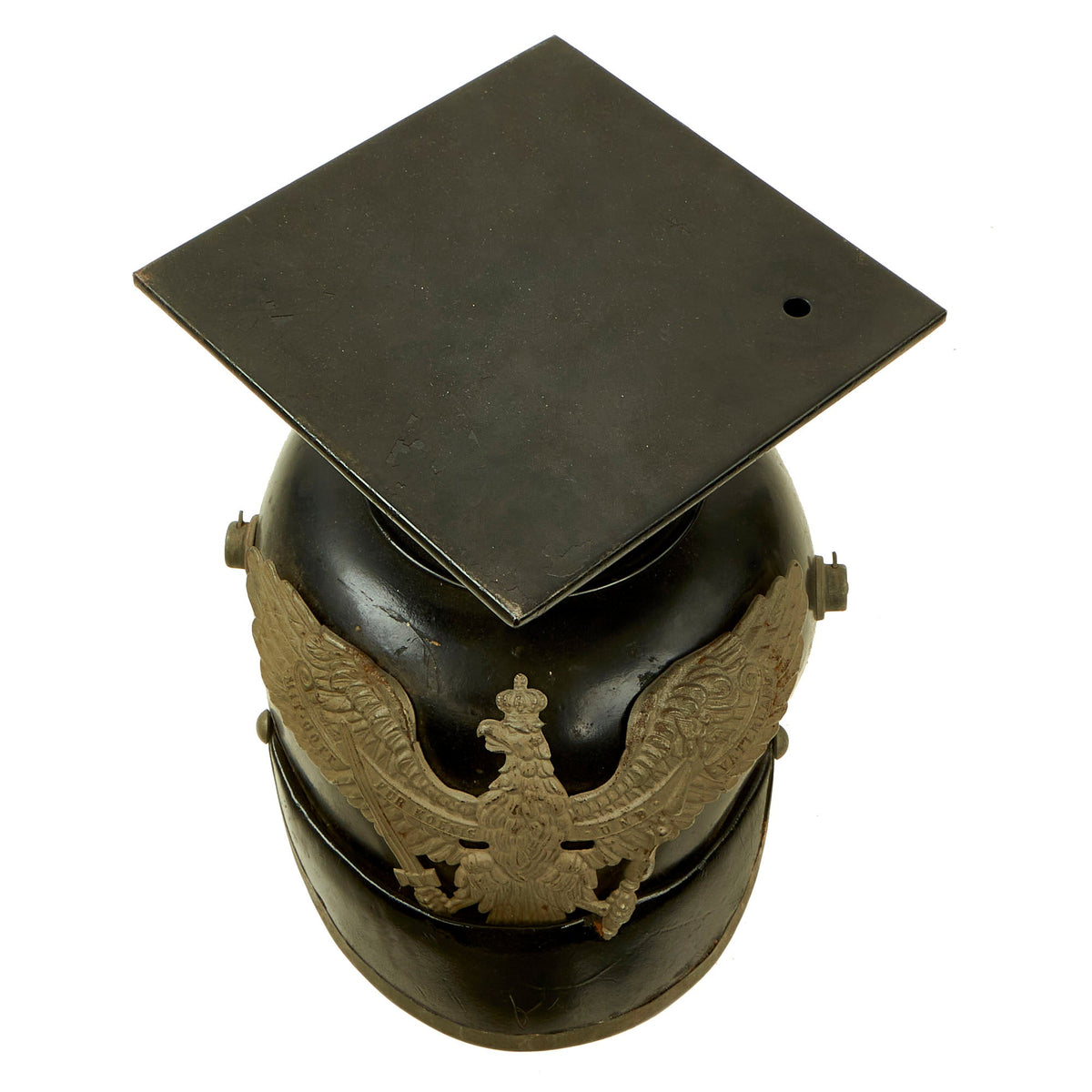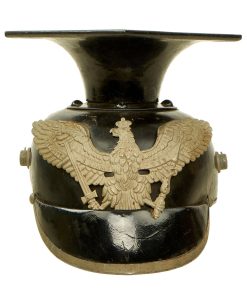Original German WWI Prussian Guards Model 1867/94 Other Ranks Uhlan Tschapka Original Items
$ 1.195,00 $ 298,75
Original Item: Only One Available. Now this is a fantastic example of an extremely hard to find Tschapka! This is in good, near complete condition. Examples in any condition are difficult to find.
The Ulanen (Lancers) Tschapka (chapka) with its distinctive square top first appeared in 1808 when Preußen introduced Ulanen (Lancer) Regiments to emulate the Polish lancers as did many nations; especially after the Polish Lancer’s performance at Waterloo in 1815. The M1843 Tschapka was a tall helmet with a squared top which was secured with gilt chinscales. The neck of the upper flat portion on the Tschapka (called a “mortar board” by English collectors) was permanently covered with a colored cloth Paraderabatte (parade rabatte). The Paraderabatten colors were specific to each Regiment but were trimmed in white for Mannschaften (Other Ranks) and silver bullion for officers. The Fangschnur (securing cord) were attached to the top of the Tschapka with a toggle for Mannschaften and a hook for officer and private purchase.
In 1867 Preußen Ulanen Regiments adopted a new Tschapka which was significantly reduced in height and volume. The new Tschapka had the eagle Wappen (front plate) moved from the neck of the top to the front of the shell. The new 1860 Wappen now carried the “MIT GOTT FÜR KOENIG UND VATERLAND” (With God For King And Fatherland) Bandeau. This is a really nice M1867 / 94 Preußen Mannschaften (Other Ranks) Tschapka with steel fittings. Nice original Wappen. It no longer retains the Prussian (black and white) and German National Colors (red white and black) Kokarden (cockades) around the chin strap lugs. For reference; In 1897 the new Reichs-Kokarde in Red-White-Black was introduced for all ranks to commemorate the 100th anniversary of the birth of Kaiser Wilhelm 1st. The Reichs-Kokarde was to be worn on the right side of the helmet, and the state Kokarde was moved to the left.
The leather liner is in good condition and is offered with the top leather thong. The leather is in wonderful condition and shows signs of very little wear but is delicate in spots from age.
Overall a fantastic lancer’s Uhlan Tschapka!
After the start of the Napoleonic Wars, uhlan formations were raised by the Duchy of Warsaw. Polish lancers serving with the French Army included the Vistula Legion and the Chevaux-légers lanciers de la Garde Impériale. The lancers of the Polish expeditionary corps, which fought alongside the French in Spain and Germany, spread the popularity of the Polish model of light cavalry. After the Battle of Somosierra, Napoleon said that one Polish cavalryman was worth 10 French soldiers. The chevaux-légers, French light cavalry units from the 16th century till 1815, were remodelled after the Uhlans. Following the Treaty of Tilsit in 1807 lancer regiments designated as Uhlans were reintroduced in the Prussian service.
During and after the Napoleonic Wars, cavalry regiments armed with lances were formed in many states throughout Europe, including the armies of Italy, Spain, Portugal, Sweden and Russia. While cavalry carrying this weapon were usually specifically designated as lancers or uhlans, in some instances the front rank troopers of hussar or dragoon regiments were also armed with lances.
In one notable action during the Waterloo Campaign as the French lancers advanced out of a defile — created by the bridge over the Dyle and village of Genappe — although they were stationary as they formed up, they lowered their lances to receive a charge by the sabre wielding British 7th Hussars who drove them back through Genappe and onto the bridge.
During the Battle of Albuera, the 1st Vistulan Lancers Regiment in French service virtually annihilated three of four of the British infantry regiments comprising Colborne’s 1st Brigade. In 1816 the British army established its own lancer regiments; converting four regiments of light dragoons for the purpose and adopting items of Polish equipment and uniforms, including the square-topped Polish uhlan cap.
The traditions of the Polish uhlans were preserved during the Kingdom of Poland. They fought both in the November Uprising of 1830 and in the January Uprising of 1863.
Uhlans were deployed in the Franco-Prussian War by the Prussian Army in a variety of traditional light cavalry roles. During the siege of Paris, uhlans were tasked with shadowing passenger balloons launched from the city: their capacity for rapid movement made uhlans the only troops able to keep pace with the balloons, either to seize them on landing or at least report trajectory and destination.
Fast Shipping with Professional Packaging
Thanks to our longstanding association with UPS FedEx DHL, and other major international carriers, we are able to provide a range of shipping options. Our warehouse staff is expertly trained and will wrap your products according to our exact and precise specifications. Prior to shipping, your goods will be thoroughly examined and securely secured. We ship to thousands clients each day across multiple countries. This shows how we're dedicated to be the largest retailer on the internet. Warehouses and distribution centres can be located throughout Europe as well as the USA.
Note: Orders with more than one item will be assigned a processing date depending on the item.
Before shipping before shipping, we'll conduct a thorough inspection of the items you have ordered. Today, the majority of orders will be delivered within 48 hours. The delivery time will be between 3-7 days.
Returns
The stock is dynamic and we cannot completely manage it because multiple stakeholders are involved, including our factory and warehouse. So the actual stock may alter at any time. It's possible that you may not receive your order once the order has been made.
Our policy is valid for a period of 30 days. If you don't receive the product within 30 days, we are not able to issue a refund or an exchange.
You can only return an item if it is unused and in the same state as the day you received it. You must have the item in its original packaging.
Related products
Uncategorized
Uncategorized
Australian WWII Owen MK1 Machine Carbine SMG Custom Fabricated Replica with Sling Original Items
Uncategorized
Uncategorized
Uncategorized
Uncategorized
Uncategorized
Armored Burgonet Helmet & Polearm from Scottish Castle Leith Hall Circa 1700 Original Items
Uncategorized
Uncategorized
Uncategorized
Uncategorized
Uncategorized
Uncategorized
Angolan Rebel 1970s era 60mm Inert Display Mortar from Angolan Civil War Original Items
Uncategorized
Uncategorized
Uncategorized
